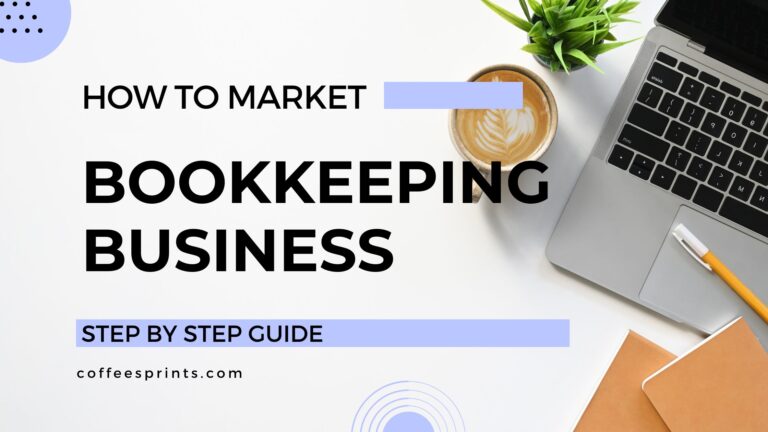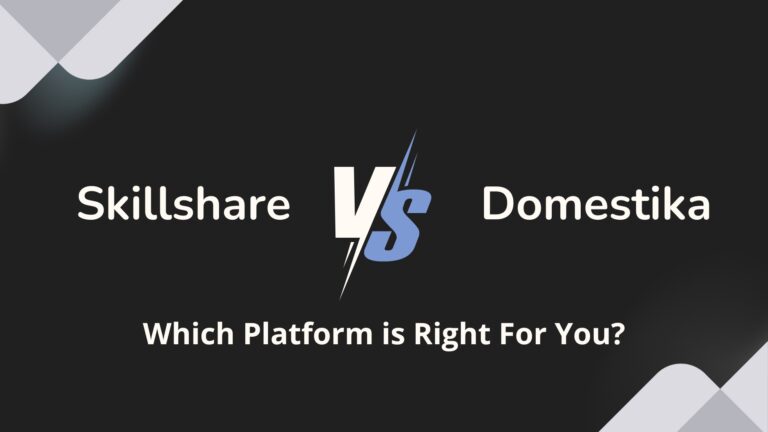40+ Landing Page Statistics Every Marketer And Business Owner Should Know
If you’re running any kind of online business, like selling products, offering services, or collecting leads for your business, you’ve probably heard how important landing pages are.
A good landing page can make the difference between someone clicking away and a potential customer signing up, buying, or getting in touch with your business.
They’re focused, tailored pages designed to guide your visitors toward one clear goal—it’s joining your email list, grabbing a freebie, buying your course, or hitting that “Buy Now” button.
But before you jump into designing one or tweaking the one you already have, you should know the data on what actually works!
So let’s dive into the stats that matter.
Landing Page Statistics Every Marketer Should Know About
Common Landing Page Statistics
- The median conversion rate across all industries is 6.6%, based on 464 million visits and 57 million conversions across 41,000 landing pages in the Unbounce Conversion Benchmark Report. Unbounce
- A separate analysis by Backlinko further adds the industry breakdowns from a 3.8% conversion rate in SaaS up to 12.3% in Events & Entertainment. Backlinko
- According to Ruler Analytics (via Invesp), the overall average conversion rate across fourteen industries is 3.3%, illustrating that broader “lead” definitions can lower the mean figure Invesp.
- Websites with 10–15 landing pages generate 55% more leads than those with fewer than 10 pages Digital Silk.
- Expanding to 21–40 landing pages can boost conversions by almost 300% compared to sites with a minimal number of pages Digital Silk.
- Organizations hosting 40 or more landing pages see up to 500% higher conversions than their counterparts with only a handful of pages Digital Silk.
- Yet, 38% of websites still have zero to five landing pages, indicating untapped potential for lead generation Digital Silk.
Engagement Metrics
- A typical bounce rate for landing pages falls between 70% and 90%, highlighting the challenge of retaining visitor attention. Digital Silk
- Nearly 48% of visitors leave a landing page without interacting further, underscoring the need for compelling, clear calls to action Digital Silk.
- The sign‑up rate on landing pages averages 23%, demonstrating their relative effectiveness for capturing leads compared to other on‑site elements Digital Silk.
- Despite these expectations, only 27% of marketers currently use automation on their landing pages to boost performance and personalization Digital Silk.
In the next section, we’ll look at how mobile visitors interact differently with landing pages—and why speed and responsiveness matter even more on handheld devices.
Mobile Landing Page Statistics
Without a doubt, mobile traffic dominates the internet, but mobile landing pages often underperform compared to their desktop counterparts. Understanding how mobile users behave and how speed, design, and usability impact conversions is essential for optimizing mobile experiences. Invesp
- 82.9% of landing page visitors access them via mobile devices. However, desktop users convert at a higher rate (12.1%) compared to mobile users (11.2%). MarketingProfs
- The average mobile landing page conversion rate is 2.8%, lower than desktop rates due to factors like smaller screens and usability challenges.Invesp
- Pages that load within 2 seconds have an average conversion rate of 9.6%, while those loading in 5 seconds drop to 3.3%.Sender
- Each additional second of load time can decrease conversions by up to 20%. Axios
- A one-second delay in mobile load times can impact conversion rates by up to 20%. Best Website Builder.
- As page load time increases from 1 to 5 seconds, the probability of bounce increases by 90%.Google Business
- The average bounce rate for landing pages typically ranges from 40% to 60%. Umbrex
Here are a few key takeaways to keep in mind:
Prioritize Speed: Aim for mobile landing pages to load within 2 seconds to maximize conversions.
Simplify Design: Use clear, concise content and minimize distractions to reduce bounce rates.
Optimize Forms: Keep forms short and user-friendly to encourage sign-ups on smaller screens.
Landing Page Optimization Statistics
Optimizing landing pages is crucial for enhancing user engagement and increasing conversions. Some of the key landing page elements, like adding a video, design elements, or an AI-powered one, are highlighted below.
- Video Integration Boosts Conversions: Including videos on landing pages can increase conversion rates by up to 86%, as they effectively capture attention and convey information quickly. Optinmonster
- Enhanced Engagement with Video: Eyeview Digital reports that adding video to landing pages can lead to an 80% increase in conversions, emphasizing the power of visual content in driving user actions.Saleslion
Design and Layout Enhancements
- Landing pages featuring interactive components, such as quizzes or sliders, see a 47% increase in user engagement, making visitors more likely to convert.Firework
- Longer landing pages have the potential to generate up to 220% more leads than shorter ones, suggesting that providing comprehensive information can be beneficial.Sender
- Personalized CTAs Enhance Conversion: Customizing calls-to-action can lead to a 42% increase in conversions, highlighting the importance of tailoring messages to the audience. UserGuiding
Role of AI in Optimization
- Utilizing AI to personalize content and CTAs on landing pages dynamically can boost conversions by 40%, showcasing the effectiveness of tailored user experiences.Firework
- Case Study – Online Retailer: An online retailer implemented AI to optimize their landing pages, resulting in a nearly 40% increase in conversion rates within a few weeks. Unicorn Platform
- Two-Step CTAs Significantly Improve Conversions: Implementing two-step calls-to-action, where users confirm their action in a second step, can increase conversion rates by up to 785%, by reducing initial friction. OptinMonster
E-Commerce Landing Page Statistics
E-commerce landing pages play a pivotal role in converting visitors into customers. Understanding their performance metrics can help optimize strategies for better results.
- Average Conversion Rate: The average conversion rate across all e-commerce businesses is 1.81%. OptiMonk
- Top Performers: The top 10% of e-commerce landing pages achieve conversion rates of 11.45% or higher. Sender
- Typical Bounce Rate: E-commerce landing pages often experience bounce rates between 60% and 90%, indicating a significant portion of visitors leave without engaging further.
- Device Impact: Mobile devices have the highest bounce rates across industries at 51%, compared to desktops at 43% and tablets at 45%. Crazy Egg
- A/B Testing: Implementing A/B testing on landing pages can lead to a 30% increase in conversion rates, highlighting the importance of continuous optimization. Shopify
- Image Optimization: Compressing images on landing pages can improve conversion rates from 9.8% to 11.4%, emphasizing the impact of page load speed on user engagement. Email vendor selection
Key Takeaways
Focus on Speed: Optimizing page load times, especially on mobile devices, can reduce bounce rates and improve conversions.
Utilize Testing: Regular A/B testing allows for data-driven decisions to enhance landing page effectiveness.
Optimize Visuals: Ensuring images are compressed and load quickly contributes to a better user experience and higher conversion rates.
B2B Landing Page Statistics
B2B landing pages serve as critical touchpoints in the business-to-business marketing funnel, aiming to convert professional audiences into qualified leads. Understanding their performance metrics can help optimize strategies for better results.
Average Conversion Rate: B2B landing pages have an average conversion rate of 13.28%, outperforming B2C landing pages, which average 9.87%. Website
Landing Page Conversion Benchmarks by Industry
Based on extensive data from Unbounce, which analyzed over 57 million conversions across 41,000 landing pages, the median conversion rate for landing pages across all industries is 6.6%. Unbounce
Here’s a breakdown of median conversion rates by industry:Unbounce
| Industry | Median Conversion Rate |
| Events & Entertainment | 12.30% |
| Education | 8.40% |
| Financial Services | 8.30% |
| Legal | 6.30% |
| Commercial & Professional Services | 6.10% |
| Health & Wellness | 5.10% |
| Travel & Hospitality | 4.80% |
| E-commerce | 4.20% |
| SaaS | 3.80% |
These figures highlight the variability in conversion rates across different sectors, emphasizing the importance of industry-specific strategies for landing page optimization.
Top Performers: The top 10% of landing pages achieve conversion rates around 11.45%. UserGuiding
Typical Bounce Rate: B2B landing pages typically experience bounce rates between 60% and 70%.
Comparison with B2C: The median bounce rate for B2B companies is 63.41%, slightly higher than B2C companies, which average 56.9%. Databox
Landing Page Optimization Strategies
Number of Landing Pages: Increasing the number of landing pages can significantly boost lead generation.
- Sites with 10-15 landing pages see a 55% increase in leads compared to those with fewer than 10.
- Having 40 or more landing pages can lead to a 500% increase in conversions. UserGuiding
Use of A/B Testing: Only 17% of marketers use A/B testing to increase conversion rates, despite its effectiveness. Sender
Content Personalization: Personalized calls-to-action (CTAs) can lead to a 42% increase in conversions.
Additional Insights
- Lead Generation Goals: Approximately 43.6% of marketers report generating leads as their primary goal for landing pages. HubSpot
- Newsletter Subscriptions: About 35% of B2B marketers consider landing pages as the top choice for collecting newsletter subscribers. Fibr AI
These statistics highlight the importance of optimizing B2B landing pages by increasing quantity, personalizing content, and conducting strategic testing to enhance conversion rates and reduce bounce rates.
Landing Page Builder Statistics
When it comes to creating high-converting landing pages, the right tools can make all the difference. Landing page builders have become essential for marketers, solopreneurs, and businesses of all sizes. In this section, let’s look at some key statistics that highlight the growing adoption, features, and trends of landing page builder platforms—and why they’re worth the investment.
Global Market Overview
- The global landing page builder market is valued at approximately USD 725.24 million in 2025. Research Nester
- It is anticipated to reach USD 3.87 billion by 2037, growing at a CAGR of 14.6% from 2025 to 2037. Research Nester
- North America is expected to dominate the market share by 2037, driven by a strong IT infrastructure and a surge in businesses establishing an online presence. Research Nester
- The cloud segment is estimated to gain the largest market share, attributed to the growing adoption of cloud-based landing page solutions and infrastructure. Research Nester
Leading Landing Page Builder Platforms
Here are the top prominent landing page builders that are widely recognized:
Unbounce: Known for its AI-driven Smart Builder and robust A/B testing features.
Leadpages: Offers user-friendly templates and seamless integrations with marketing tools.
ClickFunnels: Popular among entrepreneurs for building comprehensive sales funnels.
Instapage: Provides advanced personalization and collaboration tools for teams.
HubSpot: Integrates landing page creation within its broader CRM and marketing suite.WiseGuy Reports
These statistics show the significant growth and importance of landing page builders in the digital marketing landscape. The increasing adoption of cloud-based solutions and AI-powered tools underscores the evolving nature of landing page creation and optimization.
Armed with these insights, we hope you got an in-depth understanding of landing pages and get started with creating one.
Now, what are you waiting for?
Start building your landing page today!






